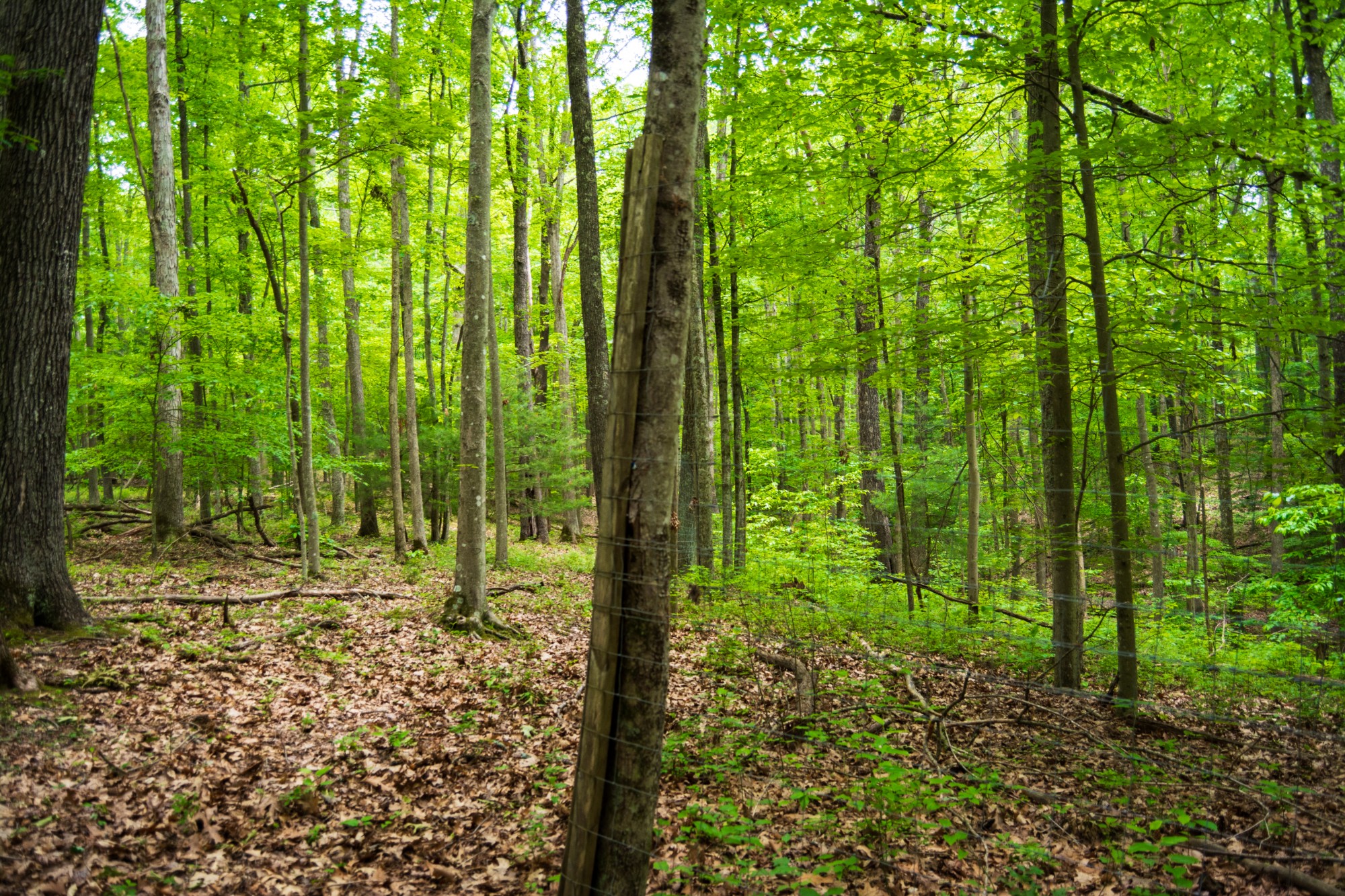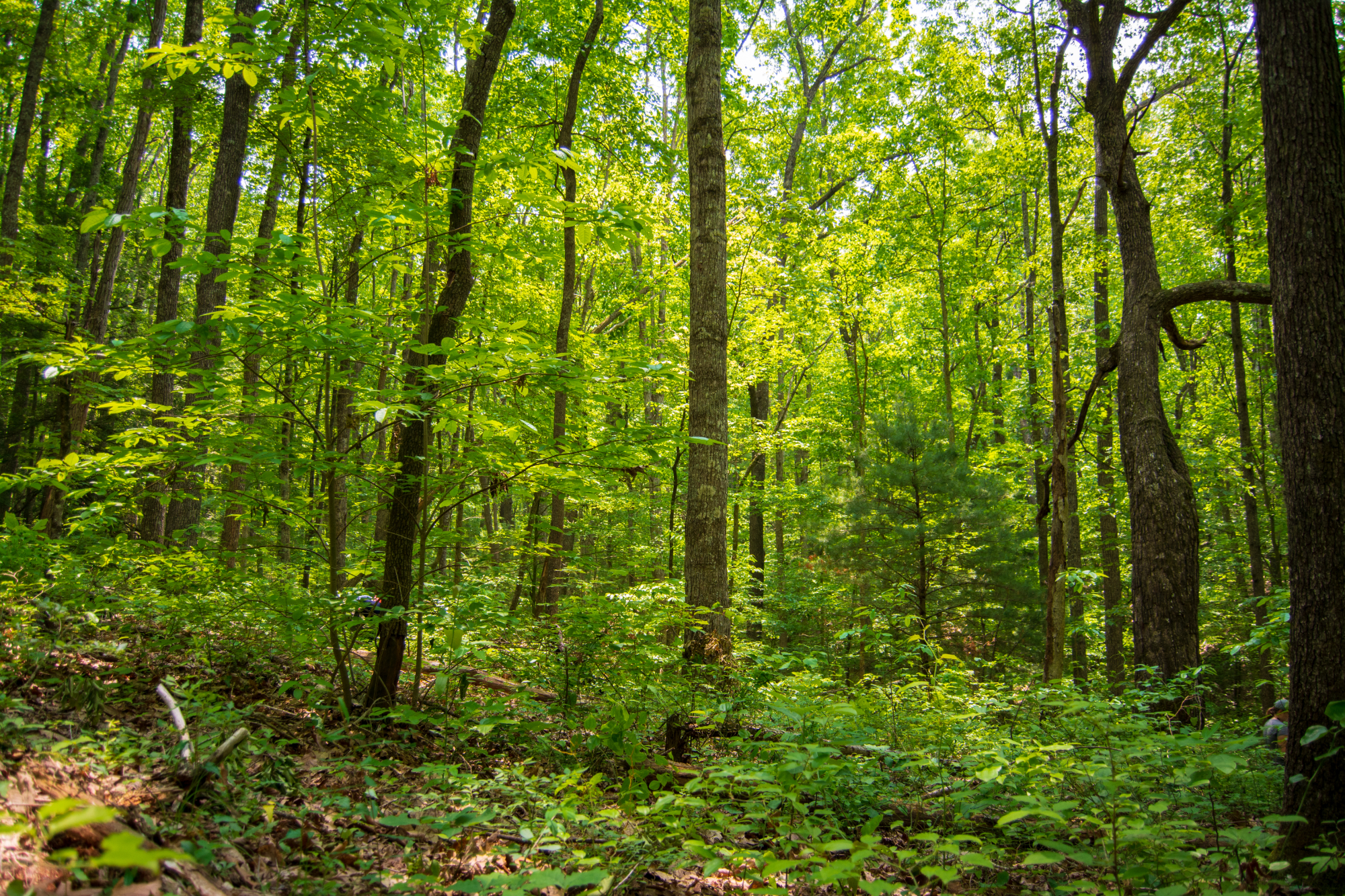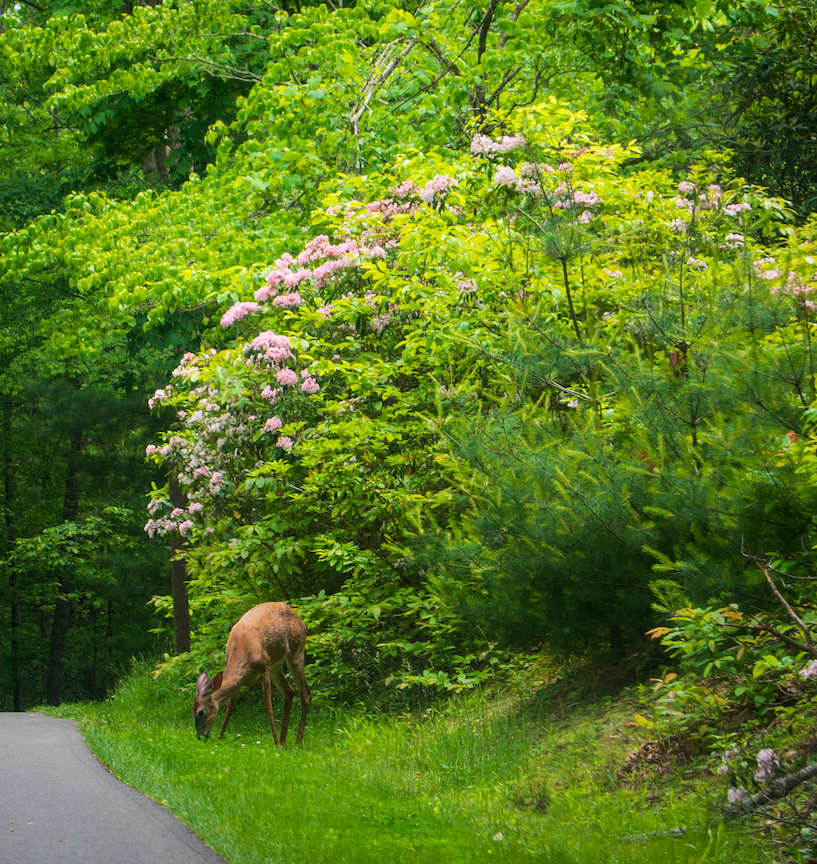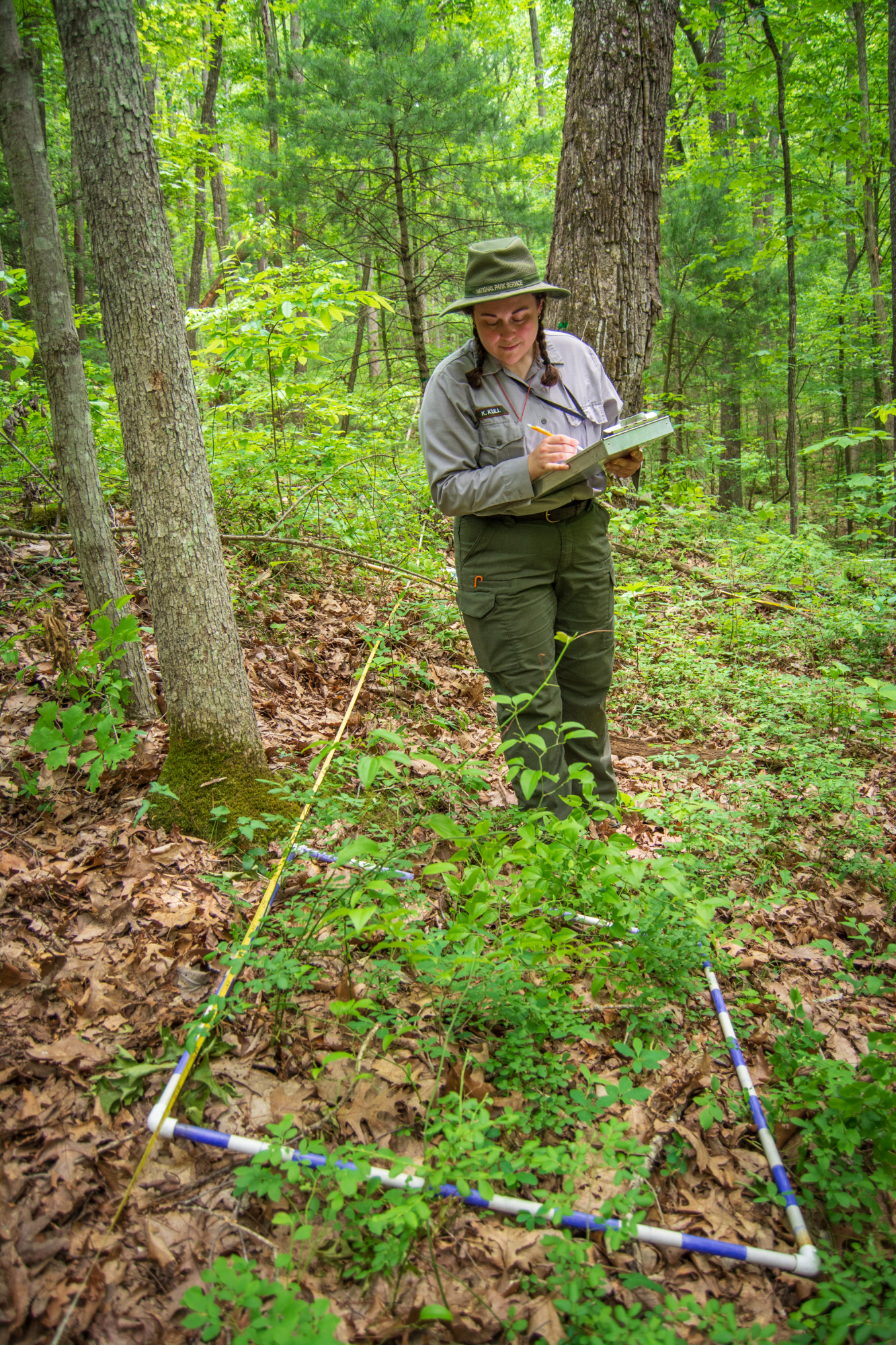Saving the Oak Forests of the New River Gorge
West Virginia is proud of their forests, and National Park Service scientists are ensuring they survive for the future.
The typical visit to Grandview within New River Gorge National Park includes parking in a lot surrounded by rhododendron plants, then walking just a few feet through a wooded area, and standing at the Main Overlook to see a panoramic landscape of mountains intersected by the New River. The view is the main attraction, but it would be lackluster without the forests blanketing the mountainsides. That’s why when the National Park Service Eastern Rivers and Mountains Network (ERMN) goes to Grandview, they turn away from the overlook and go into the woods.
Not far off the Big Buck Trail in the Grandview area of New River Gorge National Park and Preserve is a four-hectare (nearly 10 acres) fenced forest. This is one of the many sites where ERMN staff go to work. Within their selected wooded areas, ERMN field crews collect data to assess the impact of deer feeding and controlled burns on forest health. Their goal is to find a way to save the dwindling oak forests and bring them into the future.
Walking through the woods, saplings and midstory trees are diverse, but upon closer inspection, young oak trees are few.
“We still see the canopy as oaks, but underneath it, we have a lot of maples, we have sourwood, we have black gum, and deciduous magnolias that grow in this area,” said Katie Kull, biological science technician for the National Park Service’s ERMN. “It’s not bad that they’re there, but it’s less than ideal that we aren’t seeing oaks in that layer.”
Oak trees are an essential group of trees for mixed forest ecosystems. They are the host plants for more than 1,000 kinds of insects, including butterfly and moth caterpillars. Songbirds, including West Virginia’s state bird, the northern cardinal, depend on insect larvae like the caterpillars that feed on oak trees to survive. Losing oak trees causes a ripple up the food chain.
To uncover the cause of the loss of young oak trees and saplings, the ERMN team mapped out areas of forest. One parcel, like the enclosed spot by Grandview, is protected from deer and undergoes controlled burning with the National Park Service Shenandoah Wildland Fire Program. There’s also a fenced parcel that doesn’t get burned as well as two unfenced lots—one that does undergo controlled burns and one that receives no treatment at all. The area that the fire crew does not burn or fence is the control, which shows what the area is like with no management. The ERMN team monitors this area to see the forest under the current conditions.

Since the European settlement of the area, major ecological shifts have contributed to the lack of new oak trees. One is fire suppression. As homes and towns started to spread across the landscape, white settlers tried to suppress wildfires to protect their dwellings. While the number of fires in Appalachia was not as many as in the coastal plains, indigenous people in the area did set routine fires as a form of forest management. Regular fires clear the forest floor of excess leaf litter, clearing the way for species that need bare soils, like oaks, room to sprout. To help protect them against fire damage, oaks have thicker layers of bark, unlike maples.
Another ecological shift is deer overpopulation from the eradication of major predator species like wolves and mountain lions, and declined populations of bobcats and coyotes from over hunting during the 19th and early 20th centuries. More deer means increased deer feeding on understory plants. So, even if the soil is clear of debris, young oak trees would then have to survive the intense pressure of deer clearing them out like children eating candy on Halloween.
The ERMN is measuring the impact of burning and fencing off deer by having plots within their mapped-out areas. These plots are circles with a 25-foot radius. Within that circle, ERMN scientists record any downed trees and fuel sources for fire. Within the circle are four one-square-meter patches in which scientists survey the different plant species. There is also a section where the team surveys tree seedlings and saplings. They take note of all the species within the area and their size. They survey these sites at around the same time during the growing season, every four years. This is all to accurately assess what the future forest will look like when the current giants start to die off.
While this study is unique to the New River Gorge National Park and Preserve, ERMN also monitors forest health at Bluestone National Scenic River, Gauley River National Recreation Area, and six parks in Pennsylvania. Studying how deer and the lack of fires can help the team and the National Park System gain a broader understanding of how historic environmental shifts can impact eastern U.S. oak forests.
Once the data are analyzed, the team can make recommendations for how federal agencies can manage their lands to ensure the presence of vital oak tree species so that eastern U.S. forests can be vibrant bastions of biodiversity for years to come.
As National Park Service Ecologist Stephanie Perles said, “This is a demonstration of how federal land managers can bring oak forests into the future.”



